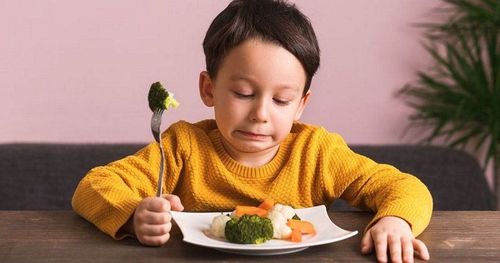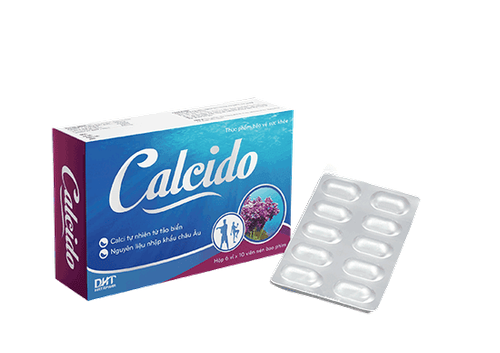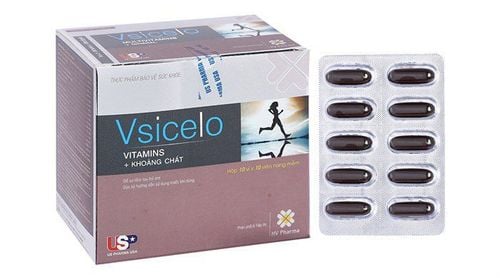This is an automatically translated article.
Children with grade 2 malnutrition have a weight below the threshold from -3SD to -4SD according to the standard deviation of the NCHS reference population. At the same time, at this level of malnutrition, the child's weight is only between 60% and 70% of the normal child's weight. Adjusting the diet is also considered as one of the effective methods to help children recover their nutritional status.
1. Classification of malnutrition by grade
Malnutrition is known as a manifestation of a deficiency of essential nutrients that affects the process of life as well as the functioning and growth of the body. Normally, children with malnutrition will have a weight index lower than normal, but based on the weight index alone to assess whether that child is malnourished or not, it is not accurate. To assess nutritional status in a comprehensive way can be done based on the following indicators: Weight for age; Height for age; Weight for height. These indicators will be compared with the assessment of nutritional status of the National Center for Health Statistics (NCHS) recommended by WHO (World Health Organization) for children in developing countries. development, including: Classification according to the World Health Organization (WHO - 1981); Classification of malnutrition according to Waterlow (1976); Classification of malnutrition according to Welcome (1970);
1.1 Classification of malnutrition according to the World Health Organization (WHO - 1981)
WHO uses weight-for-age indices, based on standard deviations (SDs) from reference populations at the National Center of Health Statistics to classify levels of malnutrition Different types of nutrition:
Malnutrition grade I: The weight of children in the range from – 2SD to – 3SD is equivalent to 70-80% of the weight of a normal child. Malnutrition grade II: The child's weight is in the range - 3SD to -4SD, equivalent to 60-70% of the weight of a normal child. Malnutrition grade III: The child's weight is below - 4SD equivalent to the weight below 60% compared to the normal child's weight The WHO classification has the advantages of being fast, simple, and universal. and can be applied to many subjects, but it has the disadvantage of not distinguishing between acute and chronic malnutrition, and does not include enough severe forms of malnutrition.
1.2 Classification of malnutrition in children according to Waterlow 1976
The Waterlow classification of malnutrition uses two weight-for-height and height-for-age indices to classify acute or chronic malnutrition and past malnutrition:
Height for age > 90% or -2SD and weight for height > 80% or -2SD: child with normal nutritional status Height for age > 90% or -2SD and weight for height < 80 % or -2SD: underweight child underweight Height for age < 90% or -2SD and weight for height > 80% or -2SD: malnourished child stunting - malnourished child stunting Weight according to height < 80% or -2SD and height for age < 90% or -2SD : malnourished children emaciated - stunted Through the above classification method shows: emaciation is a manifestation of malnutrition grant; Stunting is indicative of past malnutrition; Emaciation and stunting are indicative of chronic undernutrition. In the community, this method is used to supplement the WHO classification of malnutrition, but does not classify severe forms of malnutrition and individual levels of malnutrition in children.

Trẻ suy dinh dưỡng cấp độ 2 có biểu hiện cân nặng của trẻ giảm kéo dài
1.3 Classification of malnutrition in children according to Welcome 1970
Welcome's method of classifying malnutrition uses a weight-for-age index and this method is suitable for classifying severe malnutrition.
% weight-for-age from 60% to 80% and with edema: Kwashiorkor % weight-for-age from 60% to 80% and without edema: grade 1 malnourished children and grade 2 malnourished children 2% of weight for age less than 60% and with edema: Marasmus - Kwashiorkor % weight for age less than 60% and no edema: Marasmus Kwashiorkor body malnutrition: the child is not nourished but looks plump because of fluid retention in the legs and feet. Marasmus Body Malnutrition: This type of malnutrition occurs when body fat and tissues are degraded at a severe rate to compensate for the nutrients needed by the body due to a lack of nutrients in the body. This slows down the immune system and metabolic processes in the body. Marasmus-Kwashiorkor malnutrition: characterized by severe exhaustion as well as edema. Caused by a lack of both protein and calories. The advantage of this classification method is its convenience, quick classification of severe malnutrition, but the disadvantage is that it has not been able to classify mild and moderate malnutrition, acute and chronic malnutrition.
2. Characteristics of level 2 malnutrition
When children are malnourished at level 2, there may be many manifestations such as prolonged weight loss, fatigue, inactivity in all daily activities, fussiness, loss of appetite, and little sleep. more than normal, often sick, retarded in all activities including: crawling, speech delay, teething delay.
Edema - Kwashiorkor is typical for children with grade 2 malnutrition. For these malnourished children, this body is often nourished with flour, which lacks all the macronutrients that provide energy as well as the micronutrients necessary for the body to develop.
Children at this level of malnutrition mean that the liver will increase its activity to create fat and protein and lead to an increase in the activity of various organs such as cardiovascular, respiratory, kidney, and urinary systems. ,... When the body is in a state of complete lack of supporting substances such as substances that support metabolic activities, the organs in the body can gradually become depleted, the energy source is exhausted. causes the cells to degenerate... and the most noticeable signs include: white edema and a soft state of the whole body due to a decrease in the protein content in the blood, a decrease in the albumin content in the blood, which leads to reducing colloidal pressure should increase the ability to drain water into the intercellular space. In addition, children also have symptoms of skin pigmentation disorders, anemia causing blue skin, pale mucous membranes, deterioration in skin, hair, hair and nails... There may also be rickets caused by vitamin D deficiency and hypocalcemia. In addition, children also have symptoms of vitamin A deficiency with signs of dry cornea, night blindness or eye-related diseases. Some organs in the child's body also change, such as fatty degeneration of the liver, heart failure, reduced digestion and absorption, mental and motor retardation.

Trẻ suy dinh dưỡng cấp độ 2 cần được bổ sung các dưỡng chất cần thiết
3. Some ways to help recover from malnutrition
When a child shows signs of level 2 malnutrition, parents should take the child to see a doctor for an examination and appropriate treatment plan. Children can be supplemented with necessary and important nutrients along with a doctor's treatment such as vitamin A, iron, folic acid, or micronutrients... The doctor can apply this treatment. Provide positive nutritional value to children by feeding them as soon as possible and at the same time quickly increasing the child's nutritional intake to the maximum level to match the child's ability to digest and absorb nutrients. Use energy-rich foods, or special nutritional products, or if necessary, use digestive enzymes for children. Besides, parents need to know how to choose food as well as the amount of food needed for children in the daily diet.
Besides, how to prepare food for children is also quite important for the child's recovery process. Parents should give children many dishes in the same meal and increase their children's meals if they can't eat much in one meal. In addition, it is recommended to increase the energy density in children's meals to both ensure their energy needs and stimulate their taste buds with foods that make them eat more.
Parents also need to give their children the necessary micronutrients: Zinc, selenium, chromium, vitamins B1 and B6, Ginger, acerola fruit extract (vitamin C), ... to improve taste, eat delicious, reach the correct height and weight and exceed the standard, have a good immune system, strengthen the resistance to get sick less often and have less digestive problems.
The improvement of symptoms can take place for a long time, so it is recommended that parents be calm and persistent when supplementing with nutrients for children, even through eating or functional foods. In particular, the use of functional foods should choose those of natural origin that are easily absorbed, do not allow children to use many types at the same time or continuously change the types of functional foods.
For more nutritional knowledge and child care for each age, parents should regularly visit the website vimec.com and make an appointment with the leading doctors, pediatric and nutrition experts of the National General Hospital. Vinmec when needing advice on children's health.













